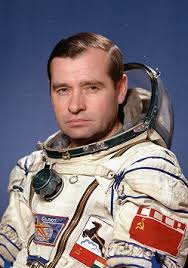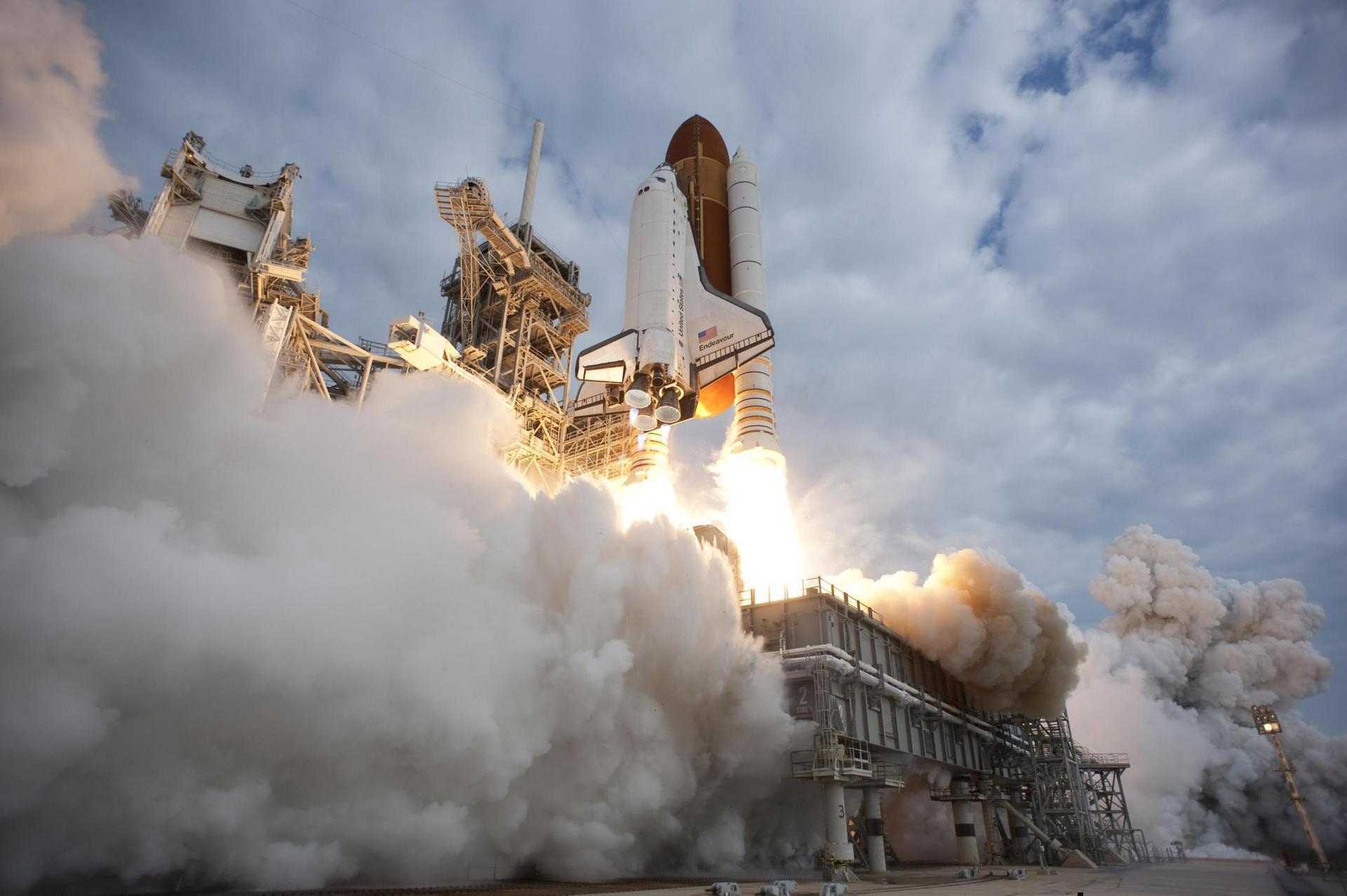Gennadi Strekalov
Russian - (RFSA)
Deceased
Date of Birth: Oct. 26, 1940
Date of Death: Dec. 25, 2004
Gennadi Mikhailovich Strekalov (Russian: Генна́дий Миха́йлович Стрека́лов; October 26, 1940 – December 25, 2004) was an engineer, cosmonaut, and administrator at Russian aerospace firm RSC Energia. He flew into space five times and lived aboard the Salyut-6, Salyut-7, and Mir space stations, spending over 268 days in space. The catastrophic explosion of a Soyuz rocket in 1983 led to him being one of only two people to use a launch escape system.
Soyuz-U | Soyuz T-3
Russian Federal Space Agency (ROSCOSMOS) | RussiaBaikonur Cosmodrome, Republic of Kazakhstan
Nov. 27, 1980, 2:18 p.m.
Status: Success
Mission:
Soyuz T-3 was the 13th mission to visit the Salyut 6 space station. It was the first Soyuz spacecraft since 1971 that carried three cosmonauts. The mission began on November 27, 1980, 14:18:28 UTC, launching Commander Leonid Kizim, Flight Engineer Oleg Makarov and Research Cosmonaut Gennady Strekalov into orbit. They docked with the station the next day. During their 11-day stay on the station, crew was busy with overhauling and maintenance work on the station, and also carried out usual experiments. The mission concluded with a safe landing back on Earth on December 10, 1980, 09:26:10 UTC.
Low Earth OrbitSoyuz-U | Soyuz T-8
Russian Federal Space Agency (ROSCOSMOS) | RussiaBaikonur Cosmodrome, Republic of Kazakhstan
April 20, 1983, 1:10 p.m.
Status: Success
Mission:
Soyuz T-8 was meant to be the fourth mission to visit the Salyut 7 space station. The mission began on April 20, 1983, 13:10:54 UTC, launching Commander Vladimir Titov, Flight Engineer Gennady Strekalov and Research Cosmonaut Aleksandr Serebrov into orbit. However, the spacecraft failed to dock with the space station and after some further attempts mission had to be aborted. The mission concluded two days later with a safe landing back on Earth on April 22, 1983, 13:28:42 UTC.
Low Earth OrbitSoyuz-U | Soyuz 7K-ST No.16L (Soyuz T-10a / T-10-1)
Russian Federal Space Agency (ROSCOSMOS) | RussiaBaikonur Cosmodrome, Republic of Kazakhstan
Sept. 26, 1983, 7:37 p.m.
Status: Failure
Mission:
Soyuz T-10a, also known as T-10-1, was supposed to be the third long-duration expedition to the Salyut 7 space station. The mission would have launched Commander Vladimir Titov and Flight Engineer Gennady Strekalov on September 26, 1983, 19:37:49 UTC, however the launch vehicle was destroyed on the launch pad by fire. The launch escape system in the Soyuz spacecraft fired two seconds before the launch vehicle exploded, saving the crew. It is so far the only case in which a launch escape system has been fired with a crew aboard.
Low Earth OrbitSoyuz-U | Soyuz T-10
Russian Federal Space Agency (ROSCOSMOS) | RussiaBaikonur Cosmodrome, Republic of Kazakhstan
Feb. 8, 1984, 12:07 p.m.
Status: Success
Mission:
Soyuz T-10 was the third long-duration expedition to the Salyut 7 space station. The mission began on 8 February 1984, 12:07:26 UTC, launching Commander Leonid Kizim, Flight Engineer Vladimir Solovyov and Research Cosmonaut Oleg Atkov into orbit. They docked with the station the next day. During their 237-day stay on the station, crew performed various scientific and medical experiments, performed six EVAs for station maintenance, and were visited by Soyuz T-11 and Soyuz T-12 missions. Soyuz T-10, per usual, swapped vehicles with the Soyuz T-11 crew, which allowed for a longer stay on the station. The mission concluded with a safe landing back on Earth on October 2, 1984, 10:57:00 UTC.
Low Earth OrbitSoyuz-U | Soyuz T-11
Russian Federal Space Agency (ROSCOSMOS) | RussiaBaikonur Cosmodrome, Republic of Kazakhstan
April 3, 1984, 1:08 p.m.
Status: Success
Mission:
Soyuz T-11 was the sixth mission to visit the Salyut 7 space station and the first to visit the long-duration Soyuz T-10 resident crew of the station. The mission began on April 3, 1984, 13:08:00 UTC, launching Commander Yury Malyshev, Flight Engineer Gennady Strekalov and Research Cosmonaut Rakesh Sharma, the first Indian cosmonaut, into orbit. They docked with the station the next day. During their 7-day stay on the station, crew performed various scientific experiments. Soyuz T-11, per usual, swapped their vehicles with the resident Soyuz T-10 crew, which allowed for a longer stay on the station. The crew returned in Soyuz T-11 spacecraft, landing safely back on Earth on October 2, 1984, 10:57:00 UTC.
Low Earth OrbitSoyuz-U2 | Soyuz TM-10
Soviet Space Program | RussiaBaikonur Cosmodrome, Republic of Kazakhstan
Aug. 1, 1990, 9:32 a.m.
Status: Success
Mission:
Soyuz TM-10 was the tenth mission and the seventh long-duration expedition to Mir space station. The mission began on August 1, 1990, 09:32:21 UTC, launching Commander Gennadi Manakov and Flight Engineer Gennadi Strekalov into orbit. They docked with Mir two days later. During their stay there, cosmonauts performed an EVA, various station repair and maintenance tasks, and carried out scientific experiments in biology, geophysics, space technology, astronomy etc. They were visited by a Progress M-5 resupply spacecraft and Soyuz TM-11 expedition. The mission concluded with a safe landing back on Earth on December 10, 1990, 06:08:12 UTC.
Low Earth OrbitSoyuz-U2 | Soyuz TM-21
Soviet Space Program | RussiaBaikonur Cosmodrome, Republic of Kazakhstan
March 14, 1995, 6:11 a.m.
Status: Success
Mission:
Soyuz TM-21 was the 21st mission and the 18th long-duration expedition to Mir space station. It was also a part of the US/Russian Shuttle-Mir Program. The mission began on March 14, 1995, 06:11:34 UTC, launching Commander Vladimir Dezhurov, Flight Engineer Gennady Strekalov and Research Cosmonaut Norman Thagard (who became the first American to ride the Soyuz) into orbit. They docked with Mir two days later. During their stay there, cosmonauts performed several EVAs to prepare for the docking of the new Spektr module. Station crew was visited by several Progress resupply spacecrafts, and welcomed aboard the STS-71 with the 19th expedition crew. Crews exchanged vehicles, and members of the 18th expedition returned aboard STS-71, landing safely back on Earth on 7 July 1995, 14:55:28 UTC. Soyuz TM-21 brought back the 19th expedition later on September 11, 1995, 06:52:40 UTC.
Low Earth OrbitSpace Shuttle Atlantis / OV-104 | STS-71
National Aeronautics and Space Administration | United States of AmericaKennedy Space Center, FL, USA
June 27, 1995, 7:32 p.m.
Status: Success
Mission:
STS-71 was the third mission of the US/Russian Shuttle-Mir Program and the first Space Shuttle docking to Russian space station Mir. It started on 27 June 1995 with the launch of Space Shuttle Atlantis from launch pad 39A at the Kennedy Space Center in Florida. The shuttle delivered a relief crew of two cosmonauts Anatoly Solovyev and Nikolai Budarin to the station and recovered Increment astronaut Norman Thagard. Atlantis returned to Earth on 7 July with a crew of eight. It was the first of seven straight missions to Mir flown by Atlantis.
Low Earth OrbitThe Roscosmos State Corporation for Space Activities, commonly known as Roscosmos, is the governmental body responsible for the space science program of the Russian Federation and general aerospace research. Soyuz has many launch locations the Russian sites are Baikonur, Plesetsk and Vostochny however Ariane also purchases the vehicle and launches it from French Guiana.
Soyuz 2.1a
Progress MS-31 (92P)
31/6 - Baikonur Cosmodrome, Republic of KazakhstanProgress resupply mission to the International Space Station.
Long March 4C
Shiyan 28 B-01
Launch Complex 3 (LC-3/LA-1) - Xichang Satellite Launch Center, People's Republic of ChinaSatellite officially named for "space environment detection" purposes, exact details unknown.
Falcon 9
Starlink Group 10-25
Space Launch Complex 40 - Cape Canaveral SFS, FL, USAA batch of 27 satellites for the Starlink mega-constellation - SpaceX's project for space-based Internet communication system.
Falcon 9
MTG-S1
Launch Complex 39A - Kennedy Space Center, FL, USASecond of EUMETSAT's third generation of weather satellite.
New Shepard
NS-33
West Texas Suborbital Launch Site/ Corn Ranch - Corn Ranch, Van Horn, TX, USANS-33 is the 13th crewed flight for the New Shepard program and the 33rd in its history.





